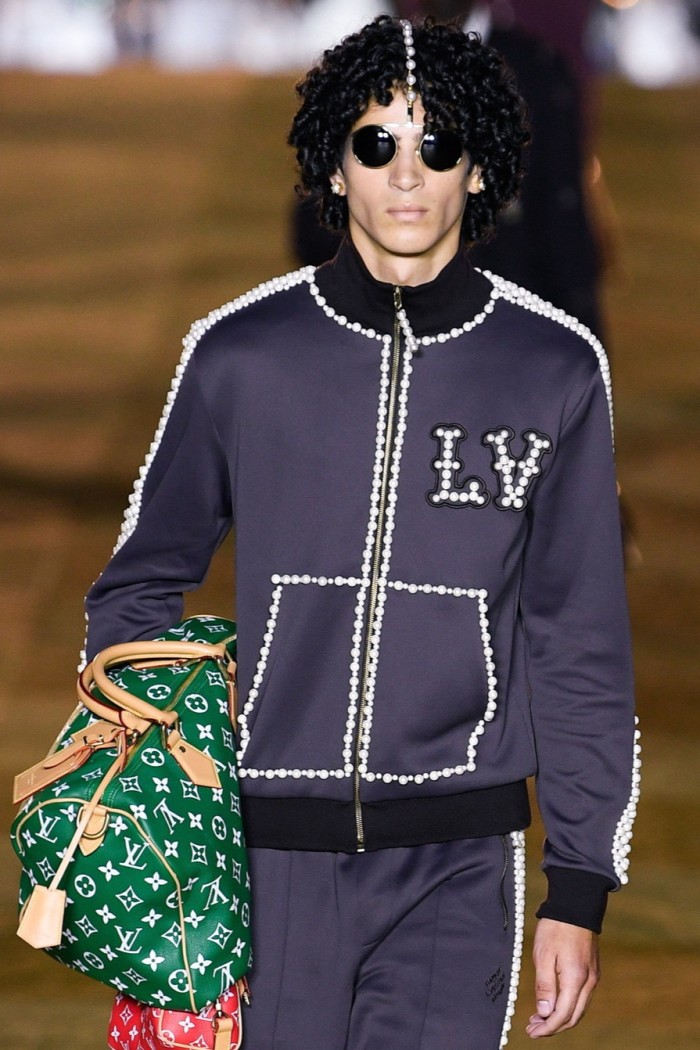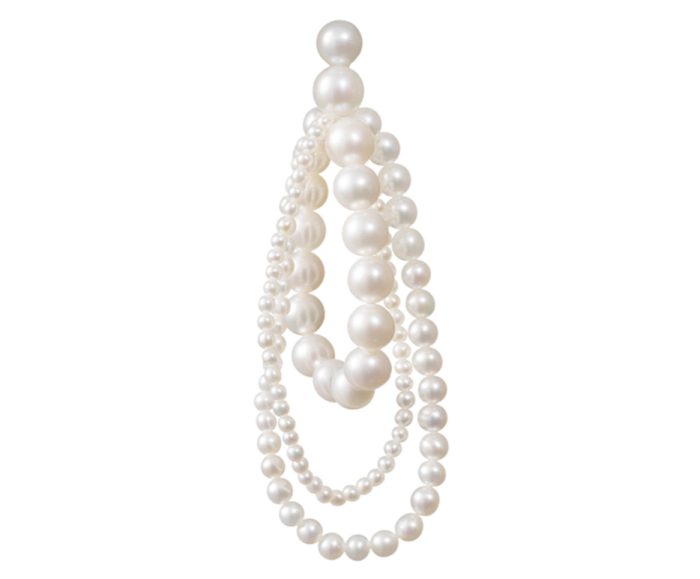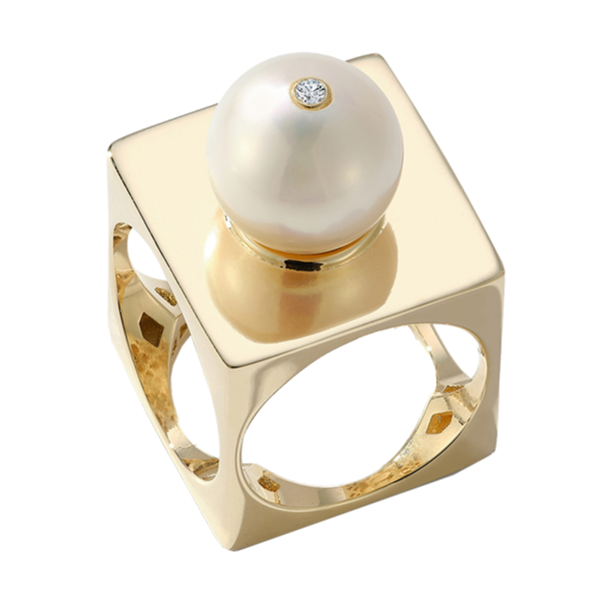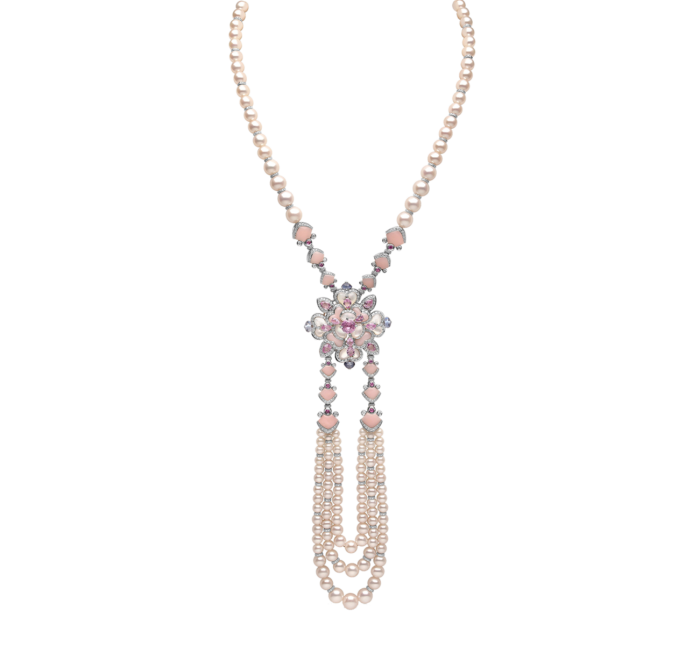How pearls went from bourgeois baubles to boys’ bling

Roula Khalaf, Editor of the FT, selects her favourite stories in this weekly newsletter.
After popping up on catwalks as accessories and embellishments, pearls might be having a new moment in the spotlight. They graced the red carpet at New York’s Met Gala in May and, coupled with beefy gold chains, frequently appear as the accessory of choice for rap artists such as A$AP Rocky and for music producer Pharrell Williams — now also the creative director of menswear for Louis Vuitton.
At the same time, designers — including Hamburg-based Greek jeweller Melanie Georgacopoulos, Copenhagen’s Sophie Bille Brahe, and Mateo New York, as well as jewellery brands Tasaki, Tiffany & Co, and Yoko London — have been attempting to transform the general perception of pearls.
At one time, they were regarded as a symbol of bourgeois elegance. In recent years, however, designers and consumers have realised the benefits of playing with the gems.
“[A pearl] is so versatile,” says Michael Hakimian, chief executive of Yoko London. “There is a lot of innovation at the moment, with young designers coming up with very different ideas.”


That innovation has helped increase demand. In Japan, Tasaki, known for its strikingly individual designs, says its eye-catching collections Balance (rings and pendants with a row of pearls aligned on a level bar) and Danger (which combines thorny gold spikes and pearls) have contributed to a boost in sales.
Another driver of the pearl market’s growth, says Tasaki chief executive Toshikazu Tajima, is the fact that “the appeal of pearl jewellery has reached a younger age group, and pearls are now also a growing trend among male customers”. With this in mind, he thinks the pearl market “can still grow even more”.
In 2022, prices for pearls surged because of unexpected demand from young men. In Japan, Nikkei Asia reported on the intensified marketing campaigns for the male demographic — called “pearl boys”.

A third of the customers for Mikimoto’s Passionoir unisex collection — featuring black South Sea pearls, and created in collaboration with fashion house Comme des Garçons — are young men.
Prices are rising for other reasons, too. Tajima points to the significant mass mortality of Akoya pearls, cultivated in the seas around Japan, that affected the market a few years ago.
Tasaki pearls proved more robust and were not significantly affected, although the impact on the area around Ise-Shima (a pearl farming area on Honshu) was substantial. The pandemic is another factor that has affected pearl farming’s two-year cycle. And, now, there is booming demand from retailers.


Having been out of the market for two years, Chinese jewellery businesses were hoovering up pearls at the HKTDC International Diamond, Gem & Pearl Show in Hong Kong in March. “Thousands of Chinese jewellery retailers and wholesalers decided they needed pearls and wanted to buy as many Japanese, Australian and Tahitian as they could,” says Hakimian, whose business handles pearls in the top 10 per cent for quality. “So, within a few days, prices that had started at the fair for — hypothetically — $1,000 almost doubled and still the Chinese were buying,” he explains.
“In the past three months, the pearl market has gone through a tremendous price differential compared with what dealers like us are used to.”
Now, farmers — including those Yoko London supported during the difficult times of the pandemic — are wanting to renegotiate prices. “You can understand their point of view, but we have enough clout and goodwill,” Hakimian says.
Despite this rise in prices, Yoko London experienced increased demand for its pearls at the Haute Jewels Geneva fair and Couture in Las Vegas this year. Colours are much in demand for summer, including Yoko’s signature ombre designs of graduating colours on a rope of pearls, while black and white combinations are popular for winter.

Pristine aquatic environments are needed to produce the most beautiful pearls. Historically, until Japanese entrepreneur Kokichi Mikimoto pioneered seeding and cultivating pearls in perfect spherical shapes in the 1890s, the main source of natural, uncultivated pearls was the Gulf around Bahrain and northern Sri Lanka, where pearl divers plucked pearl oysters from the seabed.
The Gulf’s tradition of pearling was overtaken by the oil boom in the 1970s and there was concern that pollution would affect the oyster beds. But data from Bahrain’s Supreme Council for Environment and the Bahrain Institute for Pearls and Gemstones (Danat) — a gemological laboratory that specialises in the testing and study of natural pearls — shows the beds have not been affected.
“This confirms what we already know about natural pearl oysters,” says Noora Jamsheer, Danat chief executive. “[They] are made out of calcium carbonate and absorb carbon from the environment to grow. Therefore, they have a positive impact on the state of the environment.”
The extent of the threat of climate change for marine habitats is still unknown. “The impact that the rise in seawater and water temperature might have on marine life has yet to be measured and calculated,” Jamsheer says, pointing out that the Gulf has recorded its highest temperature increases in recent years. Research has begun into the impact of these.
In Japan, which is a far bigger source of pearls, “we are already seeing signs of climate change, such as rising water temperature, but our areas have not been significantly affected so far,” says Tajima. “Although the area is less vulnerable to climate change, we are remaining vigilant and are working on research to ensure that the shellfish are strong enough not to be affected by the changes.”
Comments